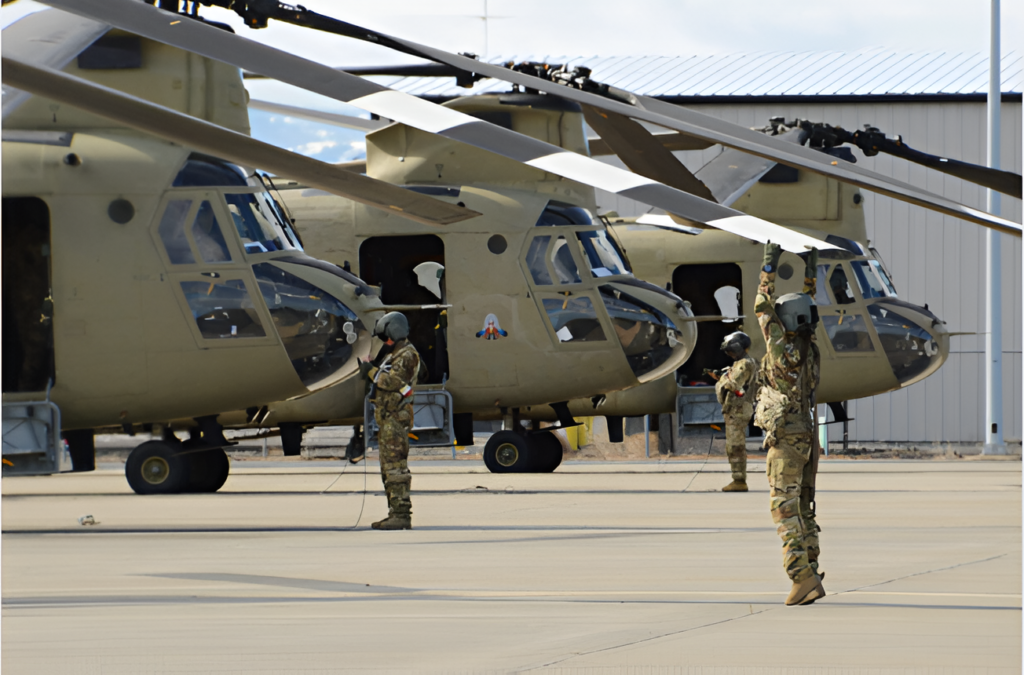
The war in Ukraine has exposed a grim reality: the United States military is far from ready for a drawn-out conflict with a capable adversary. For decades, the U.S. military assumed it could quickly and decisively win wars. But Ukraine has shattered this illusion, revealing how rapidly wars can escalate, drag on, and drain a nation’s resources—both human and material.
As U.S. defense strategy has increasingly focused on a potential confrontation with China, the unpredictable nature of modern warfare looms large. Would such a war end in weeks or stretch for years? Could it involve multiple adversaries, leading to a sprawling, multi-theater conflict? The latest National Defense Strategy Commission report warns of exactly that: “high probability” of wars that involve multiple countries, span multiple regions, and last far longer than anticipated.
Since the end of the Cold War, both the U.S. military and society at large have neglected to prepare for the possibility of a prolonged war. The United States needs a comprehensive strategy to address this challenge—one that includes mobilization, contested logistics, limitations of the defense-industrial base, and protection of the homeland during wartime. Let’s explore these critical areas of concern.
Mobilization: The Strain of Prolonged Warfare
America’s all-volunteer force may be insufficient for a drawn-out war, even with reserve forces activated. In the event of a major theater war, casualties would quickly mount, straining the military’s ability to replenish and regenerate fighting units. A conflict with China over Taiwan, for example, could result in substantial losses in the first few weeks, and the need to replace personnel would skyrocket. The long-term nature of such a war would demand a larger, more robust military force.
Historically, mobilization for a major war has been facilitated by the draft. While the idea of conscription has been largely rejected since the Vietnam War, a protracted conflict might force the U.S. to reconsider it. A draft would require approval from Congress, along with careful planning for training, logistics, and integration into active-duty units. Without a serious overhaul of mobilization systems, including updating the outdated Master Mobilization Plan, the U.S. may find itself ill-prepared for the long haul of a great-power conflict.
Contested Logistics: The Struggles of Sustaining Forces
Unlike its adversaries, the U.S. military would face logistical challenges on an enormous scale. Power projection would be vital, but ensuring a constant flow of supplies and reinforcements over vast distances, while facing adversary disruptions, could be as much of a battle as the front lines themselves. The war in Ukraine highlighted the logistical burden of warfare—artillery shells, for instance, are expended at such a rate that the U.S. defense-industrial base cannot keep pace with demand.
In any major conflict, the U.S. would need to produce and transport vast quantities of ammunition, equipment, and spare parts. But current production capacities fall short. To address this, the Department of Defense has ramped up efforts to revitalize the defense-industrial base. Partnerships with allied nations, such as munitions production with Australia and shipbuilding collaboration with South Korea, hold promise. However, the window for addressing these challenges is narrowing. Without faster adaptation, the U.S. could find itself scrambling for supplies in the midst of a protracted war.
The Defense-Industrial Base: Shrinking Capabilities
The defense-industrial base, once a backbone of U.S. military might, is now critically underfunded and overburdened. With shipbuilding down to just four U.S. shipyards, replacements for lost warships could take years, if not decades. Similarly, critical munitions like artillery shells are in dangerously short supply, and ramping up production in the wake of a major conflict would take far too long.
To combat this, efforts are underway to boost capacity—such as expanding ship repair in the Pacific with South Korea’s shipyards. However, these efforts are slow, politically complex, and not guaranteed to provide a quick fix. Without drastic changes, the U.S. military may soon face a supply crunch that could stymie its ability to fight a prolonged war effectively.
Protecting the Homeland: The Vulnerability of U.S. Soil
The idea that the U.S. homeland is safe from direct attack is no longer a certainty. Advances in missile technology and cyber capabilities have made the country increasingly vulnerable. The growing threats from nations like North Korea, Russia, and China—capable of launching missiles or cyberattacks that target critical infrastructure—add a new layer of complexity to wartime strategy.
During a protracted war, the U.S. would rely heavily on the National Guard, which plays a dual role in both supporting military operations abroad and responding to domestic crises. However, this balancing act could clash if major threats to the homeland emerge simultaneously with overseas military demands. For instance, if a power grid were attacked or cyberattacks crippled critical systems, the National Guard could be stretched thin. As we’ve seen during past crises, governors may insist on prioritizing local needs over federal military demands, leaving the military vulnerable.
Moreover, U.S. reserve forces, while not under state command, also face conflicting demands. The Guard and reserves often provide vital support in wartime, and losing access to these forces could seriously hamper military readiness. As new threats loom, it’s essential to prepare for scenarios in which the Guard and reserves cannot be fully mobilized for combat operations.
Conclusion: Time to Prepare for the Worst
U.S. policymakers must confront the challenges of mobilization, contested logistics, a strained defense-industrial base, and homeland defense head-on. Procrastination or wishful thinking will not suffice. History has shown that wars rarely follow the anticipated timeline, and the U.S. must be ready for the possibility of a long, costly engagement.
As Army Chief of Staff General George Marshall aptly remarked during World War II, “For almost twenty years we had all of the time and almost none of the money; today we have all of the money and no time.” The U.S. military must use the time it has now, before war erupts, to address these critical gaps. Doing so will ensure that America is not caught off guard when the inevitable challenges of a protracted war arise.



